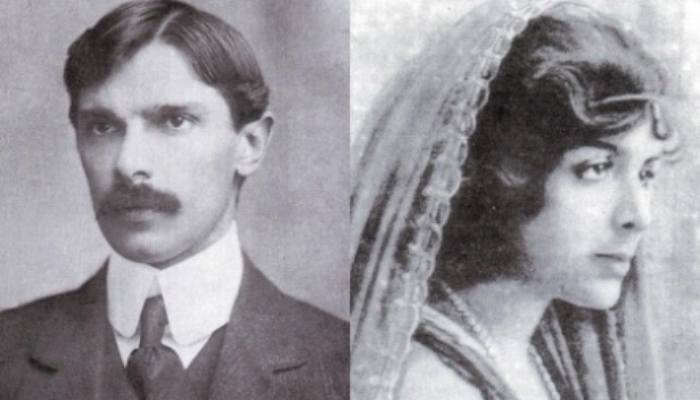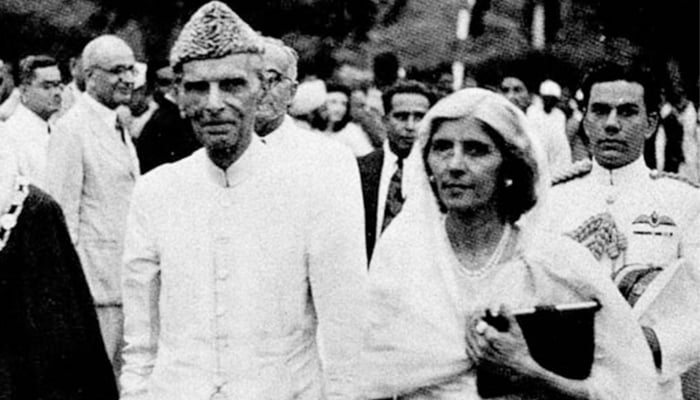A successful, ambitious, and determined man is never alone. He has the unwavering support of his family and loved ones. These loved ones are usually women who empower and inspire them to become the best versions of themselves.
Quaid-e-Azam Muhammad Ali Jinnah, the man who transformed the dream of Indian Muslims into reality, also had a network of women around him who shaped his life, fuelled his ambitions, and made him one of the most outstanding leaders ever.
Mithibai
A child’s first alma mater, inspiration, and ideal is always his mother. The one who brought him up always remains the closest to his heart. The man who was the architect of Pakistan was no exception. Jinnah was not different from any other child. He was very fond of his mother, who showed him the same affection even after having five more kids as he was his eldest one.
Mithibai, Jinnah’s mother, was a very strong-headed and lovable woman. She married Jinnahbhai Poonja in 1876, and a year later, Jinnah was born. According to Fatima Jinnah, her mother loved her eldest son immensely. Mithibai believed that her son was an exceptional child and would become a big man one day. That’s why she worked hard for his education and regularity at school.
She was the driving force behind Jinnah’s move to England to succeed in life. Although her influence in Jinnah’s life was short-lived, it was deep; she died a year after he left for London. Jinnah was barely 16 when his mother left for her final abode. When he heard about the news, he cried inconsolably — young Jinnah was miserably sad that he couldn’t be with his mother in her last breath. That was when Jinnah learned to transform his grief into strength, which helped him become a leader with unmatched determination and vision.
Emibai
Wives also play a significant role in a man’s life, and the role is more effective when the couple is young. But Jinnah’s first marriage didn’t impact him or his life. Quaid married twice. His first wife was Emibai, whom he married when he was only 15 years old. Many people wonder what the reason behind this early marriage was. Jinnah’s parents wanted their son to be wedded before he voyaged to England.
The couple didn’t develop much feelings for each other, and soon after marriage, he left for London. They were poles apart, and the long-distance relationship grew their matrimonial bond apart. This marriage lasted only four years as Emibai suffered from an epidemic in 1896 and couldn’t survive. Jinnah couldn’t come to see his ailing wife, and that’s how his first marriage ended.
Ruttie Jinnah alia Rattanbai

The most influential and unmentioned woman in Jinnah’s life was his second wife and the first love of his life, ‘Ruttie Petit’ alias Rattanbai. Ruttie was the only daughter of one of the most influential business tycoons of Indian society, Sir Dinshaw Petit and Lady Dina Petit.
Ruttie became Rattanbai after converting to Islam before marrying Jinnah. Rattanbai was a beautiful combination of beauty with brains and wit. She was a bibliophile with a keen interest and understanding of English literature, which also transferred to Jinnah.
Quaid was friends with Rattanbai’s father. The couple first met in the summer of 1916 in Darjeeling (a picturesque hill station in India), where Jinnah went to have a leisure break from his strenuous work routine. Jinnah’s captivating and impressive personality caught Rattanbai’s attention. They liked each other’s company in Darjeeling as they shared similar ideas on politics and mutual interest in horse riding, animals, and justice for all.
Rattanbai was a vivacious girl who was, although just 16 at that time, far more mature and intelligent than her age. Even Jinnah was awestruck by her intelligence. During Jinnah and Rattan’s time in that hill station, they decided to get married. However, things became bitter when Rattan revealed her decision to her parents as they thought Jinnah was too old for her and wasn’t a suitable choice as he was a non-Parsi.
Meeting Rattanbai brought a significant change in Jinnah’s personality. The man who used to be reserved, sober and lonely became relaxed and contented after his summer vacations. Jinnah felt more lighthearted and carefree in Rattanbai’s presence, encouraging him to talk to her father for her hand. Sir Dinshaw refuted the idea and obtained a two-year-long ruling from the court that forbade her daughter from meeting Jinnah. On February 20, 1918, Rattanbai turned 18, and as soon as the verdict expired, this girl, with undaunted courage, converted to Islam and married the love of her life.
Rattanbai’s fanciful love story had passed all the obstacles of time and succeeded. With each passing day, Jinnah was mesmerised by her intelligence, beauty, and eloquence; she used to stand by his side on every occasion. Soon after the wedding, Jinnah’s popularity on the political front started to soar. Rattanbai’s hero was now becoming the nation’s hero and an immensely popular leader of India. This changing politics of India made Jinnah extremely busy, and Rattanbai’s fairytale romance was starting to fade. But when she was expecting their first and only child, Dina Jinnah, Jinnah pampered his wife unconditionally.
Rattanbai was so fond of her husband that with all his strenuous routine and busy lifestyle, she always tried to compromise, but when Jinnah left Congress in 1920, she couldn’t absorb that stance. This episode was the first time that the couple started having confrontations. Amongst the things Rattanbai loved about Jinnah was that he was a nationalist, and when he left Congress for Muslims, she felt fumed and could grasp Jinnah’s political sagacity.
Rattanbai had a mercurial and passionate nature; she could understand Jinnah’s point of view, which created acrimony among them. Although the love was very much there, politics had divided their views, and from there on, the clash of personalities began. Once their relationship soured to an extent that Rattanbai called it a “tragedy” in one of her letters to Jinnah.
Rattanbai’s health started to deteriorate in 1926; the couple quarrelled a lot during those days until 1928 when she finally left the house and shifted to the Taj Hotel. This companionship was now a clash of two strong-willed personalities who didn’t want to show flexibility. Rattanbai eagerly waited three months for Jinnah to reconcile and finally left for London. The energetic and affectionate Rattanbai couldn’t endure the pain of loneliness and Jinnah’s separation; she got extremely ill and bedridden during her stay in London. When Jinnah heard about all this, he ran to meet her and tried to bridge the gulf between them; he stayed with her until her health improved and shifted her back to Bombay with her mother.
However, he was so occupied architecting Indian politics, which by now had reached its pinnacle, that he couldn’t give time to his personal life. It was February 20, 1929, when the vibrant and vivacious Rattanbai breathed her last as a lonely and unhappy soul. Jinnah got the news when he was attending a budget session in Delhi. This is how the love story of the woman, who completely changed the lonely Jinnah and filled his life with love and exhilaration, ended.
Jinnah was completely hard-broken by her demise, and the first and last time the public saw him crying so bitterly was when he buried his wife.
Fatima Jinnah

Another prominent woman in Quaid’s life who was mostly accompanying her brother during the pre- and post-partition era was his youngest sister Fatima Jinnah. She was born in 1893 when Jinnah was in London. Fatima was 17 years younger than him and considered her brother just like a father figure as she was just eight years old when their father died. After their father’s demise, Jinnah took responsibility for Fatima and took her and her family to Bombay, where he enrolled her in one of the prestigious schools, the Bombay Bandra Convent.
Fatima even lived with her brother during her Bombay residency until she moved to Calcutta, where she was enrolled in Dr Ahmed’s Dental Collage for higher education. It was the same time when Jinnah got married to Rattanbai. Jinnah even opened a clinic for his sister’s dental practice. When Rattanbai died in 1929, Fatima left all her work and moved to her brother’s house to care for his daughter and him.
During this struggling time of Jinnah’s life, when he was going through serious health issues and emotional breakdown, Fatima stood with her brother like a rock, motivating him until his death. Jinnah saw the leadership qualities in his sister; and hence, prepared her as an epitome of a Muslim woman in India. He always stayed thankful for her constant help and support and never shied away from publicly thanking her.
These women were the few most significant pillars of Quaid-e-Azam’s legacy. They played an incredible role in shaping our founder’s values, fuelling his ambitions, and turning his potential into greatness.
Jinnah’s triumphant journey, which inspired millions of Muslims to join his cause, was only made possible by his mother’s sacrifices, his wife’s endurance and encouragement, and his sister’s unwavering support.
The author is a Karachi-based writer and has worked with various news publications. She likes following and writing on current affairs and sports.

